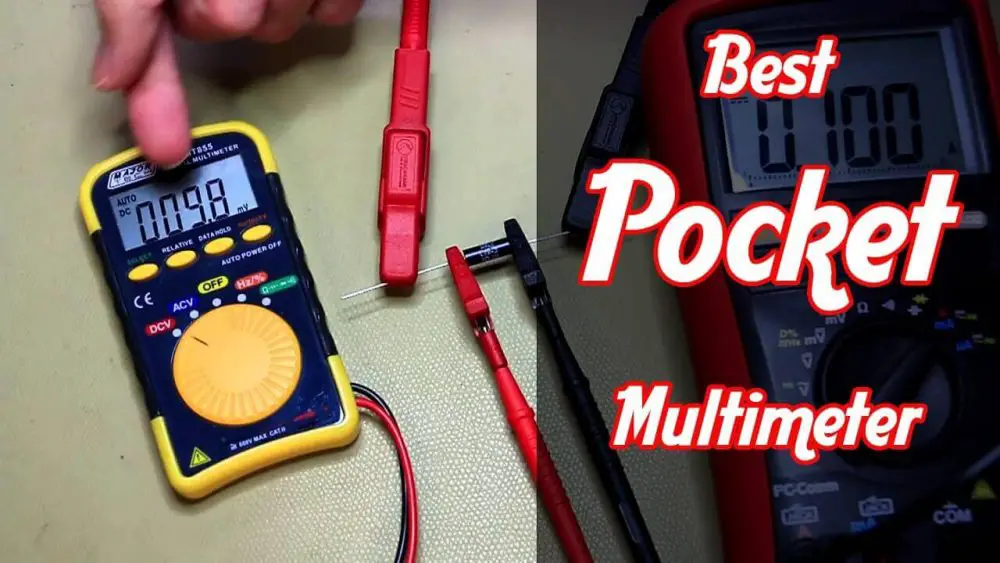How to Measure Ohms with a Multimeter?
This is measured using a digital multimeter and indicates if an electrical circuit is complete or broken. A component’s resistance relates to the manufacturer’s specification.
By following these steps to complete the resistance test:
- Make that the component under test is isolated from the rest of the circuit. Isolate the component by removing it from the circuit or using an open switch.
- The selector dial should be set to Ω.
- Connect Simply the test leads and probes to the component terminals.
- Check the readout window to obtain the Ω reading.
- Compare the results to the manufacturer’s Ω specifications. Resistance is not an issue if the readings match the component. If the component is a load, there should be resistance that matches the manufacturer’s specs.
- When the reading is either infinite (I) or overloaded (OL), the component is open.
- If the reading is 0, then the component is stopped- If it’s a load, it’s an internal short.
- Double-check all power is turned off on the circuit you’re testing.
A Complete Introduction to Ohm’s Law?
Ohm’s law is used by engineers to calculate the resistance of a circuit. This formula was discovered by Joseph Henry Ohm, who was born in 1791. He discovered the law while working on the electromagnet for an electric generator which was being developed at his employer’s laboratory in Germany at that time. In 1817 he published his findings as “A New Principle of Electromagnetic Resistance.
Ohm’s law is a fundamental law of physics. It states that electrical resistance is directly proportional to the current and inversely proportional to the voltage. Ohm’s law also describes how to measure resistance in terms of ohms (units: Ω). It is not just a mathematical equation, but also an engineering principle that describes how two different materials can be connected in series or parallel.
Ohm’s law describes the relationship between voltage and current in a circuit. It is used to describe the relationship between power and current in many different circuits, such as electric motors, transformers, computers, etc.
Ohm’s law is used in electronics to describe how currents flow through electrical components such as resistors and capacitors. It is also used in electronics to calculate voltages, currents, and power dissipation.
Resistance is a measure of the electrical resistance of an object. It is expressed in ohms. Resistance can be expressed as resistance value or by a number called ohm’s law (R = I × V).
Resistance is measured in ohms and it gives us a way to express the magnitude of current flow through an object, which can be measured with a multimeter.
The resistance value for an object is usually expressed as R, where R is the resistance value and I represents the current flowing through that object. The current flowing through an object can be measured with a multimeter.
The purpose of this test is to determine if the component is defective and can be replaced or repaired.
What Does An Ohm Reading Mean?
An Ohm reading is a measurement of electrical resistance. It is the resistance of an object when a current is applied to it. The resistance will increase as the current increases and decrease as the current decreases. Ohm Reading is the measurement of the resistance of a conductor between two points. Ohm Reading is calculated by measuring the resistance at two points on a wire, one at one end and another at the other end.
Resistance is measured in Ohm’s Law:
The resistance of a circuit can be measured in several ways, such as:
1) Ohm’s law: The formula for calculating the resistance of any circuit, based on the number of turns and length of wire used.
(2) Ohm’s law for resistors: This is an easy way to calculate the resistance value when you have only two resistors
(3) Ohm’s Law for Inductance: This formula allows us to calculate the inductance value when we have two inductors
(4) Ohm’s Law for Capacitors: This formula allows us to calculate capacitance value when we have a capacitor and an inductor
Frequently Asked Questions:
Multimeters (also referred to as “resistance” testers) are devices that measure the resistance of a circuit. They can be used in a wide variety of applications
You can use Ohm’s Law to calculate resistance if you know the total current and voltage across the entire circuit: R = V / I.
Conclusion:
We learned how to measure resistance in this article. Measuring resistance (ohm) is a simple procedure if you are familiar with using a multimeter.
Furthermore, since you’ll be working with potentially dangerous parameters, you must take caution. So, go with a safe that has advanced functionality.
Read more:
How To Measure Resistance With A Multimeter?





